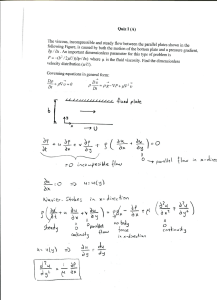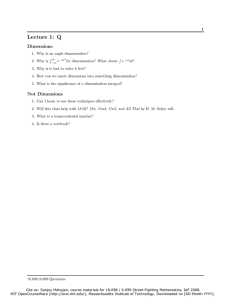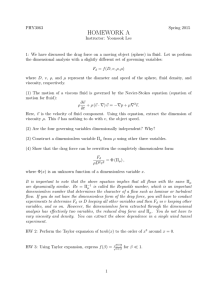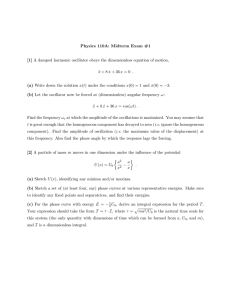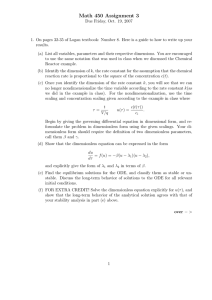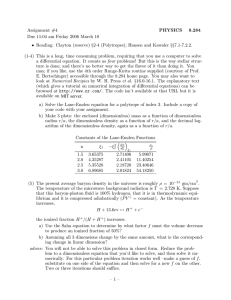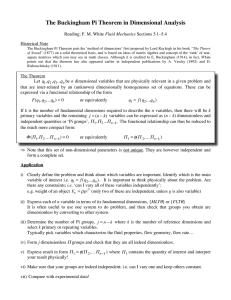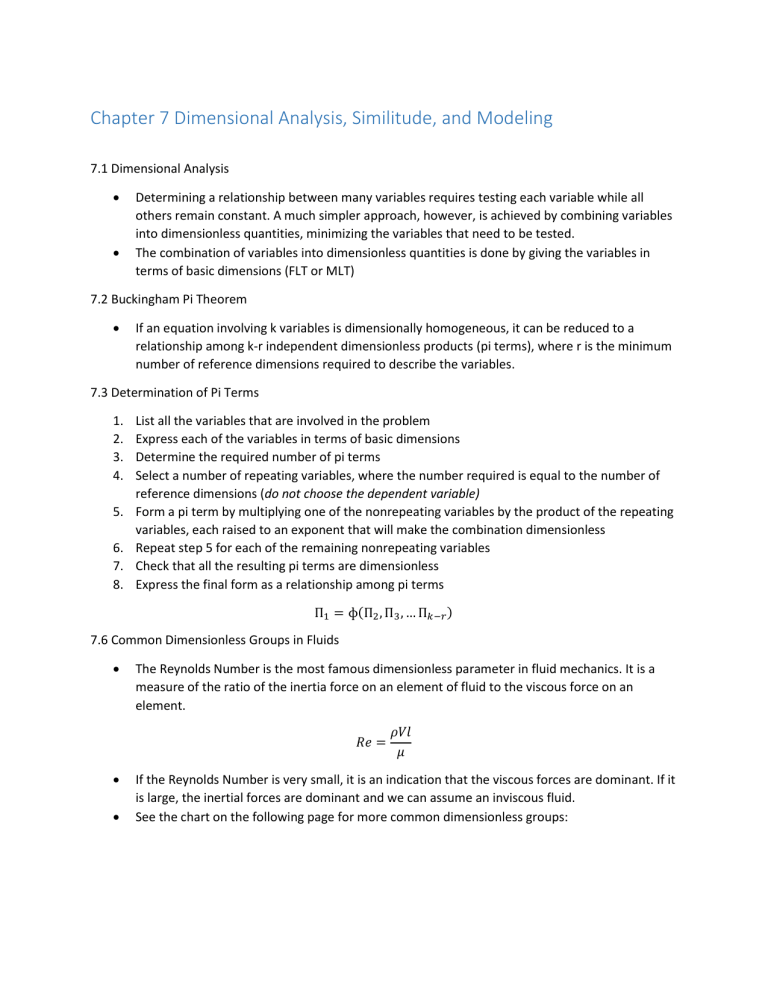
Chapter 7 Dimensional Analysis, Similitude, and Modeling 7.1 Dimensional Analysis Determining a relationship between many variables requires testing each variable while all others remain constant. A much simpler approach, however, is achieved by combining variables into dimensionless quantities, minimizing the variables that need to be tested. The combination of variables into dimensionless quantities is done by giving the variables in terms of basic dimensions (FLT or MLT) 7.2 Buckingham Pi Theorem If an equation involving k variables is dimensionally homogeneous, it can be reduced to a relationship among k-r independent dimensionless products (pi terms), where r is the minimum number of reference dimensions required to describe the variables. 7.3 Determination of Pi Terms 1. 2. 3. 4. 5. 6. 7. 8. List all the variables that are involved in the problem Express each of the variables in terms of basic dimensions Determine the required number of pi terms Select a number of repeating variables, where the number required is equal to the number of reference dimensions (do not choose the dependent variable) Form a pi term by multiplying one of the nonrepeating variables by the product of the repeating variables, each raised to an exponent that will make the combination dimensionless Repeat step 5 for each of the remaining nonrepeating variables Check that all the resulting pi terms are dimensionless Express the final form as a relationship among pi terms Π1 = ɸ(Π2 , Π3 , … Π𝑘−𝑟 ) 7.6 Common Dimensionless Groups in Fluids The Reynolds Number is the most famous dimensionless parameter in fluid mechanics. It is a measure of the ratio of the inertia force on an element of fluid to the viscous force on an element. 𝑅𝑒 = 𝜌𝑉𝑙 𝜇 If the Reynolds Number is very small, it is an indication that the viscous forces are dominant. If it is large, the inertial forces are dominant and we can assume an inviscous fluid. See the chart on the following page for more common dimensionless groups:
